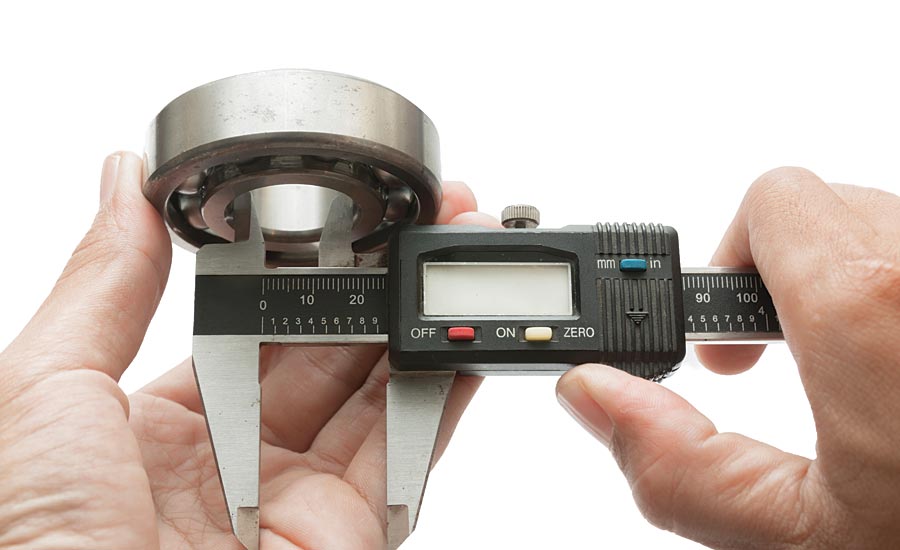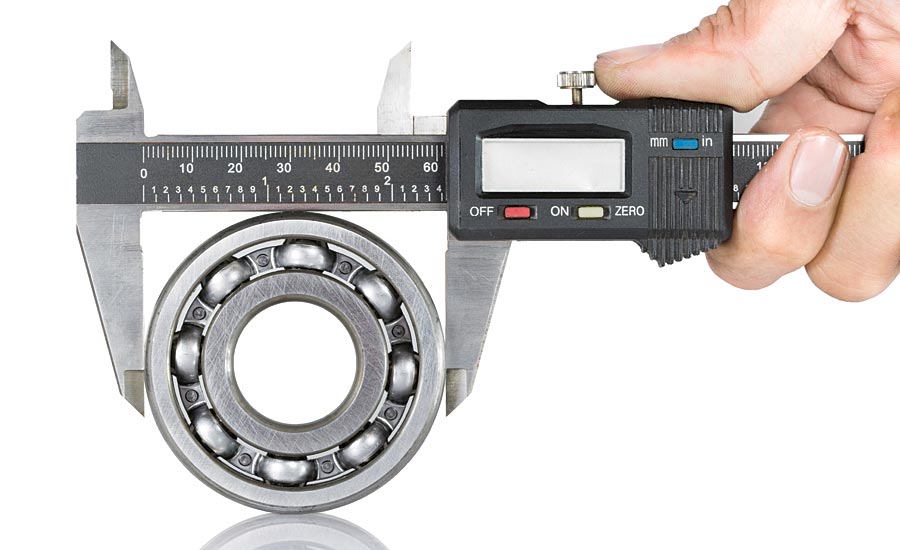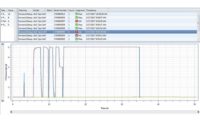Each new journey begins with a single step. That common proverb applies to most aspects of life, including the decision to start a new business or organization. A company can look back fondly to that first bold and courageous decision to merely begin. However, the journey isn’t just defined with the first step, but all of them contribute to where you find yourself today. All along the way decisions must be made to ensure the success of the business.
Early in the life of an organization, there is limited staff, and everyone wears many hats. Decisions are made based on the resources on hand and what can be made to work for now. Systems are created and implemented to assist with the growth of the company. In the manufacturing field, in particular, as the company expands, the number of tools, gages, and measurement devices also grows. It comes with the territory that as the products and services offered increases, the amount of supporting equipment also multiplies.
At some point, the number of tools and gages reach a critical mass. Tracking all the equipment proves to be a much more significant portion of the quality team’s role. Homegrown spreadsheets and paper trails begin to show their limitations. Gages are found everywhere and yet never where they need to be. Calibration of the tools becomes difficult or impossible to stay ahead of, and detailed records are a quality manager’s dream. Tough choices lie ahead for how to expand, improve, and reimagine the gage management process.
An initial hurdle is to determine if a new system is warranted at this time. “Our current process has worked fine so far” or “Do we really need to invest in this now?” are common phrases of opposition. In some instances, existing gage management systems can be stretched or duct taped to hopefully limp along. However, this path creates additional risk for the organization. An overtaxed or inadequate system will likely lead to crucial servicing being missed, gages being used beyond their calibration intervals, and slipping of the overall quality of the parts and products being produced. Awkward conversations with customers and auditors could be right around the corner.
Hopefully, the loss of a critical contract, or being on the wrong side of an audit, isn’t necessary for a business to appreciate the importance of a well-run gage management process.
After there has been sufficient evidence or buy-in from the organization that a change is needed, what are the next steps? First, a close inspection of the legacy system is crucial. This entails reviewing all of the current resources, personnel, and methods that are in use today. An honest assessment by a team of stakeholders should reveal what aspects of the old system worked well, were adequate, or proved utterly lacking.
By identifying the flaws and pain points of the current process, a set of requirements begins to take shape for the replacement. Documenting this research phase can prove extremely valuable later. This defines not only the current issues, but why the decisions were made to seek an alternative. In addition, having established some form of documentation will assist when and if the project spans several weeks or even months.

There are a number of software packages that specialize in the tracking and maintaining of gages, tools, and measurement devices.
Another aspect of the research phase is to identify new influencers like customers, additional industry standards to adhere to, and room for growth and expansion of the company. A new gage management system should not be limited to only meeting or improving upon an existing process but be flexible to meet future needs as they arise. It can be difficult to imagine all possible scenarios for the coming years, but some discussion and consideration should be made for likely outcomes and needs.
Once a thorough and complete review of the legacy system has been completed, requirements have been recorded, and future needs have been documented, it’s time to consider how best to proceed. There are three common avenues that companies may elect to take their gage processing to the next level. They can utilize a module of an existing ERP system, create or commission the new system themselves, or invest in a specialized software package. Each option provides distinct advantages, yet each also poses challenges. A careful review of the options will likely lead to the best solution being chosen.
Module of ERP system
If a company already uses an ERP (enterprise resource planning) system for other components of the business, then it should naturally be in the running for encompassing the gage management area as well. Most ERPs are designed as a platform to host a wide variety of information in a central database. This can provide a core set of tools for users throughout an organization.
Utilizing an existing ERP has the benefit of low to no additional cost to the business. Additionally, it typically boasts one of the highest acceptance rates from the general users, as they are already familiar with the product. Often an ERP system includes a specific module with gages and tools in mind or it can be customized to meet many of the device management needs. For managers looking at the bottom line, this could be a top pick.
However, ERP systems are not beyond reproach. “A mile wide and an inch deep” is a common complaint of many ERPs in the field. Though it can accommodate a larger-than-average range of data sets, it may struggle with more specific user requirements. It can be made to work as long as the team is flexible in its expectations and willing to accept some features “as is.” This option can also fall flat when future changes or improvements are necessary. An ERP provider may not be able to satisfy all the detailed requirements gathered during the research phase of the gage management project.
Custom built system
Another option is to develop a custom gage management system from the ground up. This solution provides the most freedom since the design, creation, and implementation are all firmly in the hands of the end users. All of the identified requirements can be met with a custom one-off tooling system.
With a custom-made program, other areas of the business can also be included. Tie-ins to accounting, shipping, and purchasing systems could prove beneficial. Imagine users completing gage servicing events, creating purchase orders, and transferring equipment to other locations all from one custom interface.
One important decision that comes with this method is who will build the new system. The internal IT staff or an outside firm? An organization with a solid technical team and expertise to devote to a new project has an advantage. If not, then contracting an external consulting resource to build the gage management system would be required. In either case, high cost and time for development could be considered a major detraction for selecting a custom built system.
Additionally, the maintenance factor of a custom application must not be overlooked. It is essential to consider how issues with the new system will be resolved as well as support for future requirements. Otherwise, a team may be stuck with a rigid or error-prone system that becomes unusable over time.
Lastly, the success of a custom system relies heavily on the stakeholders’ ability to identify all the requirements upfront. If the team overlooks features such as notifying users when gages are overdue for servicing, the means to deal with calibration failures, or lack of traceability in the record keeping, then it presents a risk to the organization. Once the project is underway, any changes or updates could be costly and/or impact the delivery date.
Commercial software package
The third avenue is to invest in a best-of-breed software solution for the gage management system. There are a number of software packages that specialize in the tracking and maintaining of gages, tools, and measurement devices.
Commercially available software can boast a number of advantages. They are designed with industry terminology and standards in mind. This means that right out of the box they can likely accommodate a majority of the requirements that were initially identified. Often a software package will contain additional features and options that can fill previously unknown needs as well. “We never considered that aspect during our requirement phase, but we see how that feature will save us time!”
Additionally, most software suppliers offer support and updates of their products. Questions, requests, or resolving issues can be handled remotely, so your own IT team isn’t burdened. Also, updated versions of the software can deliver more tools and features while matching ever-changing industry standards.

The importance of a well-organized and operated gage management system cannot be understated.
However, an organization considering an off-the-shelf software solution must still be diligent. It is important to investigate each vendor, as they are not all the same. Trials and demos of the software can be valuable during the consideration phase. Identify early the upfront investment and if there are additional or recurring fees. You don’t want to be blindsided later with a costly purchase order.
Selecting a commercial software solution could also mean establishing a long-term commitment with the vendor. Some software solutions require rigid licensing models and proprietary data storage. It can be critical to understand what is being purchased, how flexible the software is for your end users, and how accessible your data will be.
The importance of a well-organized and operated gage management system cannot be understated. The health and accuracy of the tools and measurement devices in an organization have a direct impact on the quality of the parts, products, and services that can be delivered. A goal for excellence and continuous improvement must be at the forefront of any organization.
While the prospect of picking a new system appears daunting, it is vital to remember that is it only one more step in the progression of the business as a whole. Careful review of each option, consideration of the requirements, and an understanding of the necessary investments will lead to the optimal path forward. Q


